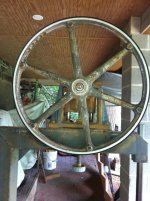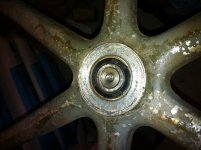AnderewM
Plastic
- Joined
- Jun 11, 2013
- Location
- Baltimore, MD
I am rebuilding a Parks No 2 bandsaw. Currently I am replacing the bearings on the top wheel spindle. Should have the new bearings in a couple of days and I am trying to determine what type of grease to use on them. And how to grease them. The spindle had two bearings set about 3" apart. The casting that supports the bearings has a grease fitting in it and there was a greenish blue grease on the spindle between the bearings. The lower wheel also has a grease fitting set into the casting but I haven't opened that one up yet. My assumption is you pump some grease into the space between the bearings every now and then to lubricate them. But lots of reading on this site makes it sound like spindle bearings are lubricated with grease when they are installed, being careful not to over grease them because that causes overheating. Every few years they are re-greased. Pumping grease into the fitting would make it very easy to over grease the bearings, almost makes it a requirement. You wouldn't know the grease had reached the bearings until it starts to squeeze out between the races.
Anyone have any ideas? Should I pump the spindle full of grease or should I grease the bearings individually?
And what type of grease should I use each way.
Thanks,
Andrew
Anyone have any ideas? Should I pump the spindle full of grease or should I grease the bearings individually?
And what type of grease should I use each way.
Thanks,
Andrew


 . IMO for the low temps involved, the gloves will be best so long as they are relatively clean, certainly dry, & don't shed.
. IMO for the low temps involved, the gloves will be best so long as they are relatively clean, certainly dry, & don't shed.



